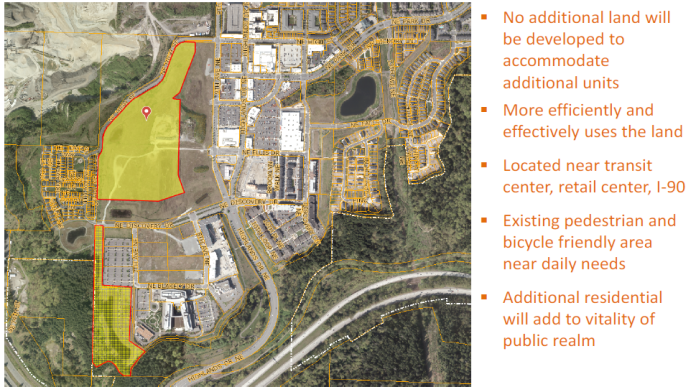On January 18th, the Issaquah Land & Shore Committee recommended denial for a major modification request to the Issaquah Highlands development agreement, citing lack of community benefit and concerns about density and excessive growth in the Highlands. Polygon Northwest had requested the addition of 100 units to their already approved 265-unit Westridge development in the Highlands in exchange for preserving Park Pointe as green space.
Polygon Northwest has proposed use of the transfer of development rights (TDR)–procured by the aforementioned green space preservation–in the 100-unit addition. City staff felt that the Highlands could handle the growth, and it was “good growth” due to the proximity of the transit center and the walkability of the neighborhood. The proposal will move to the full city council for further consideration and could approve the project regardless of the “do not pass” recommendation.
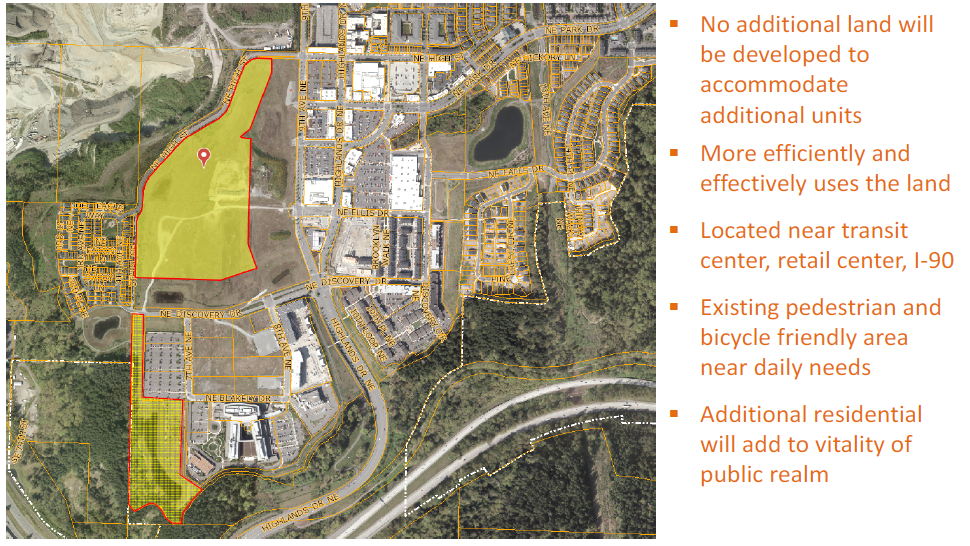
However, with about 750 of the planned 4,450 units still to be added to the Highlands, local public infrastructure is struggling to handle the growth. Even transit is overtaxed, with the massive Highlands Park-and-Ride at capacity by 9am and ST Express buses stuck in I-90 congestion as the HOV lanes end several miles west of the Highlands. Sound Transit and Metro’s long-term plans do not include major upgrades to the Highlands, with 9th Ave only getting a single “frequent” route in 2041 and the Link station miles away.
The TDR units, and the associated affordable units, will not be lost if the council rejects the major modification to the development agreement. They have a legal right to be built somewhere in Issaquah.
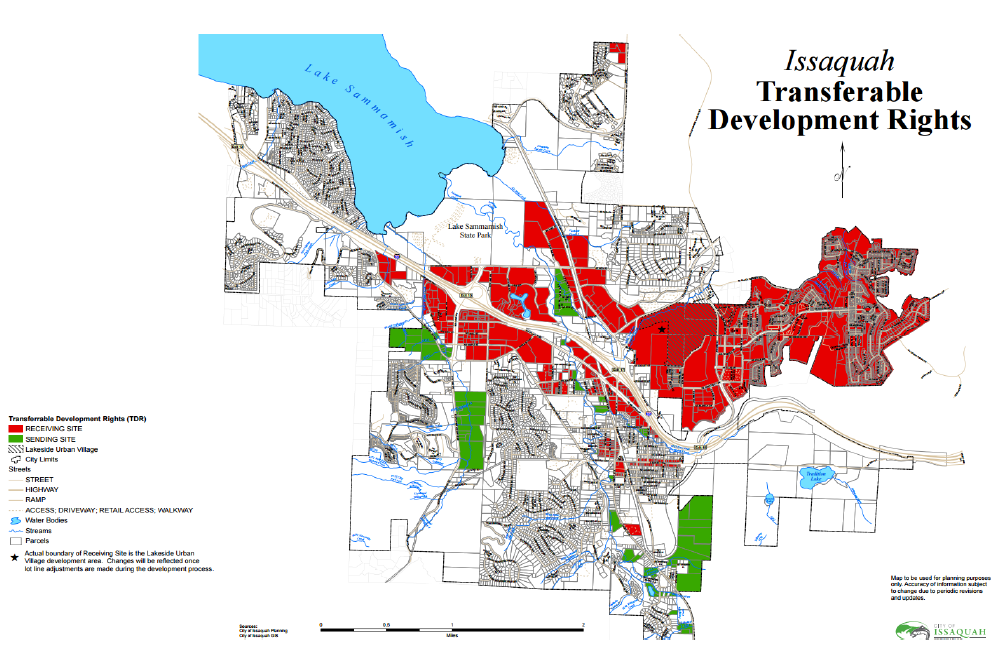
Arguably, both Issaquah and the region are better off if these additional units are developed in Central Issaquah. Recall Central Issaquah is both a Puget Sound Regional Council growth area and the terminus of a fully funded Link line. Issaquah is booming and is on track to achieve its 2031 housing goal by 2018, but Central Issaquah has not yet taken off. To paraphrase one of the councilmembers at the January 18th meeting, we are “densifying everything but our core and will meet our growth targets…it seems backwards…what is the positive benefit of adding density to the city outside of the core?”
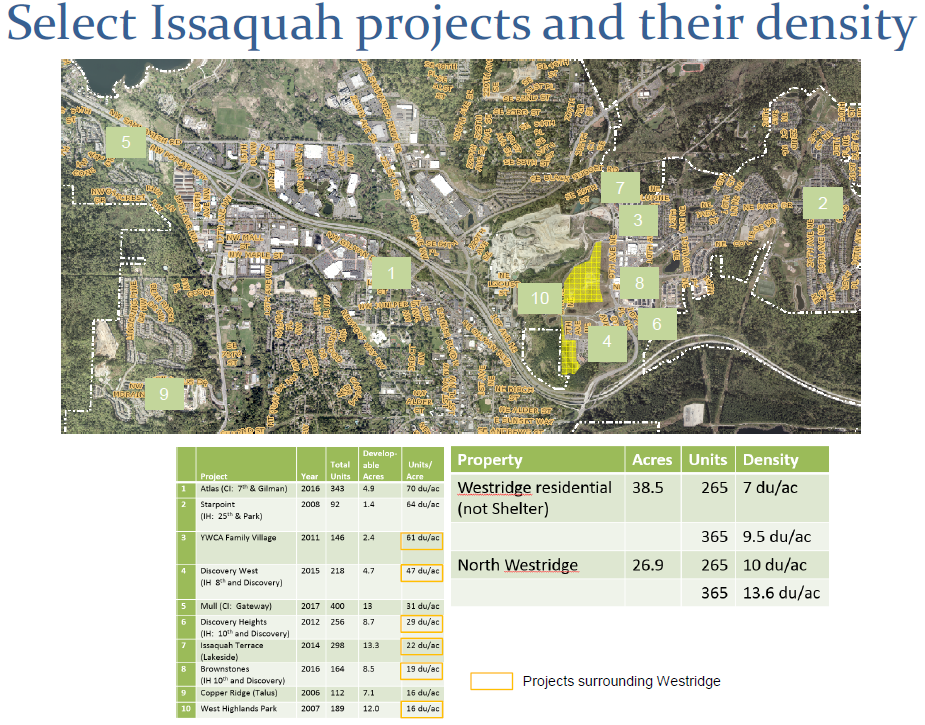
After listening to the discussion at the Land & Shore meeting, I agree that the city is better off directing the TDRs towards Central Issaquah. Basically, what’s the point of planning for a city core if you can’t get anyone to build there?
This brings the discussion to the Central Issaquah development moratorium. In September, the city council placed a moratorium on new development in Central Issaquah and directed the city staff to work with outside consultants on the following projects: architectural fit, urban design, vertical mixed use, affordable housing, parking, and district vision.
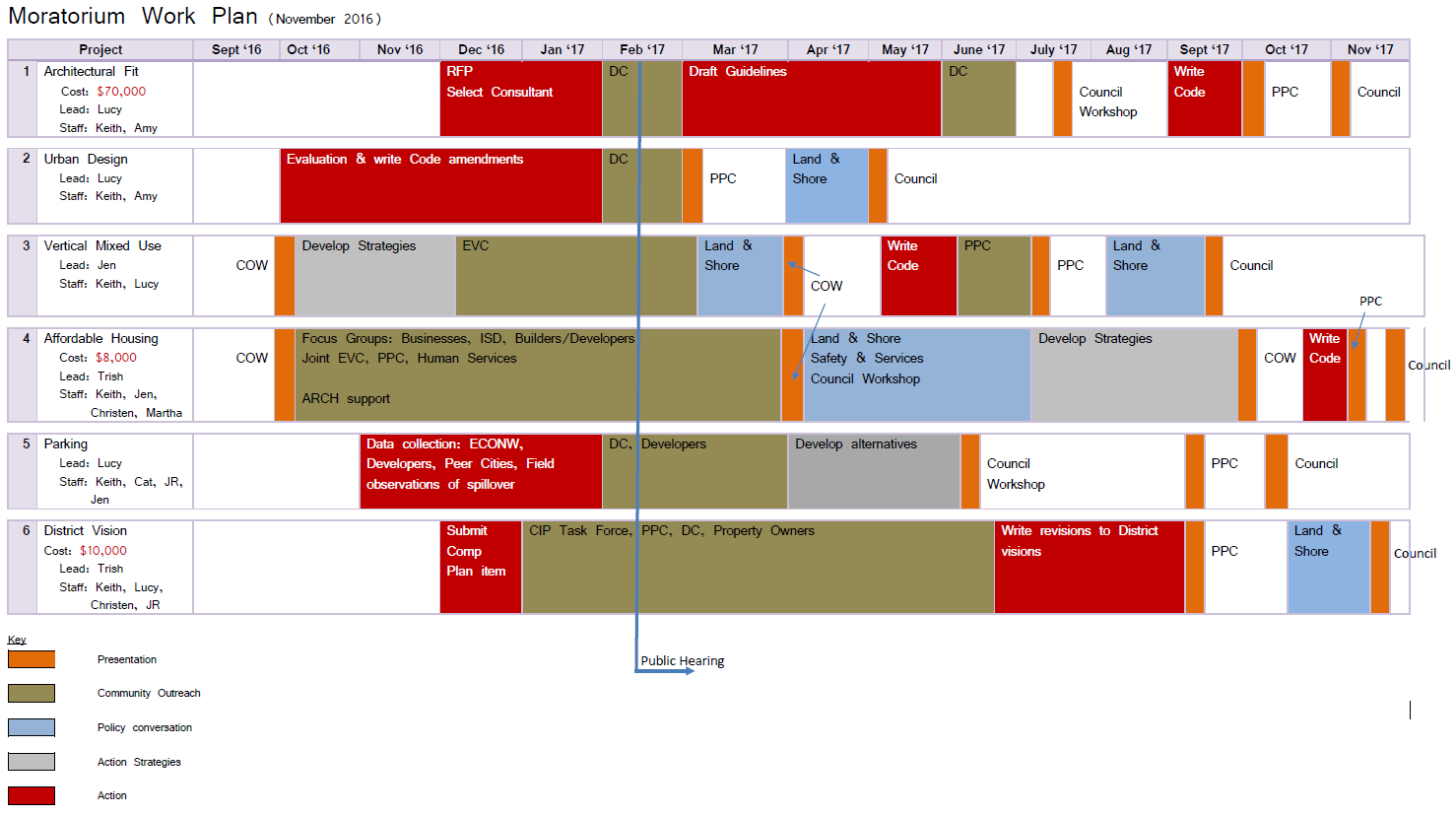
Staff is still in the “intel gathering” phase and will provide an update at the February 21st city council meeting. The council is expected to extend moratorium by another six months to allow additional time for staff to work on the projects.
Is the housing crisis so bad that we need to add housing everywhere? Or, when we are adding housing in thousand-unit increments, should we slow down and make sure we get it right as a community? As a pro-urbanist advocate, it can be hard to distinguish between those who share urbanist goals but have valid concerns about the nature of the growth and those whose objections are simply anti-growth or anti-urban.
With the city ahead of schedule on regional housing goals and the Link station decades away, perhaps now is an appropriate time for Issaquah to take a breather from major development to reflect and engage with the public. Much development will continue in Issaquah, with hundreds of approved units in the Highlands and small projects in Central Issaquah unaffected by the moratorium. The city continues to work on transit-oriented development by the existing transit center, and the local school district has a massive expansion fully funded. In the meantime, the city is working with consultants on the moratorium work plan and is engaging with the public. Presentations to council committees is expected to kick off in the spring and continue through summer. Stay tuned.
AJ McGauley
AJ McGauley was a temporary transplant in the Seattle area, living in East King with his lovely wife for five years before returning to the great Midwest. Having lived in nine very different cities in the six years prior to moving to Washington, he discovered the wonky side of urbanism after reading The Urbanist and is interested in why cities grow (or don’t grow) in different ways. He worked for Sound Transit and can still be found riding transit for fun.

